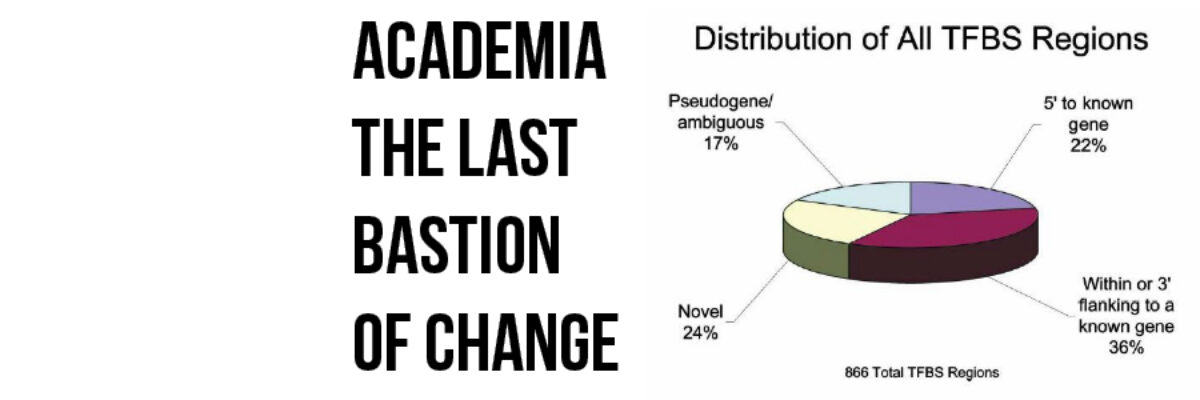 Wherever I travel, without fail, the people who are most resistant to making the necessary changes to present data more effectively are academics. I wish I was kidding. After all, I used to be one. Some of my best friends are academics. Even the young ones who are on board with better design when they aren’t in the ivory tower tend to balk when I suggest improved slide design or clearer data visualizations for their study. Why are academics so resistant?
Wherever I travel, without fail, the people who are most resistant to making the necessary changes to present data more effectively are academics. I wish I was kidding. After all, I used to be one. Some of my best friends are academics. Even the young ones who are on board with better design when they aren’t in the ivory tower tend to balk when I suggest improved slide design or clearer data visualizations for their study. Why are academics so resistant?
Underneath the excuses I hear from them is really one issue: if I don’t present the typical academic way – that is, slides full of bullets and graphs full of confusion – my colleagues will not take me seriously. It isn’t viewed as credible.
Let’s address this issue of credibility.
We actually have lots of ways of determining credibility in the academic world when it comes to data and research:
Reliability
Validity (both internal and external)
Strong methods (both quantitative and qualitative)
Assumptions testing
Rigorous designs
Plentiful options for appropriate sampling
And so on. When we link these things together we build the case for having engaged in credible research. You teach this credibility stuff in your classes and had it ingrained in your head in grad school. ME TOO.
But nowhere in that list does it say:
Present it all in dull tables and bullet points.
It’s just that that’s the way it’s been done around here. That’s just the culture of academia.
Presenting data effectively is a culture changer. It’s a movement toward being understood.
The bullet points are just a comfortable cardigan with elbow patches that appears as a suit of armor which will defend you against criticism.
Breaking away from the cloudiness produced by bullets and tables and moving toward clarity is an act of personal courage.
It means your audiences will accurately judge your credibility based on how they were trained – on your design, your methods, your assumptions. It’s a risk that people will actually understand your study, both its strengths and weaknesses. And that is the point of being an academic – to pursue knowledge and share it with your field.
And anyway, why is it such a big deal in academia to take a risk or show an act of personal courage? Higher education is supposed to be the breeding ground for young, thriving minds, asking hard questions and scrambling for the funding to test it, to try new things, to experiment, and to learn. And besides, most of you have tenure.
The point is, that’s where the credibility lies – in using our hallowed methods to ask new questions and contribute to our collective knowledge. But those experimental results don’t become a part of our collective knowledge unless audiences can digest what academics are presenting. It’s time for an academic culture change.
Cawley S, et al. (2004) Unbiased mapping of transcription factor binding sites along human chromosomes 21 and 22 points to widespread regulation of noncoding RNAs. Cell 116:499-509, Figure 1
Pulled from The Top Ten Worst Graphs in Scientific Literature

